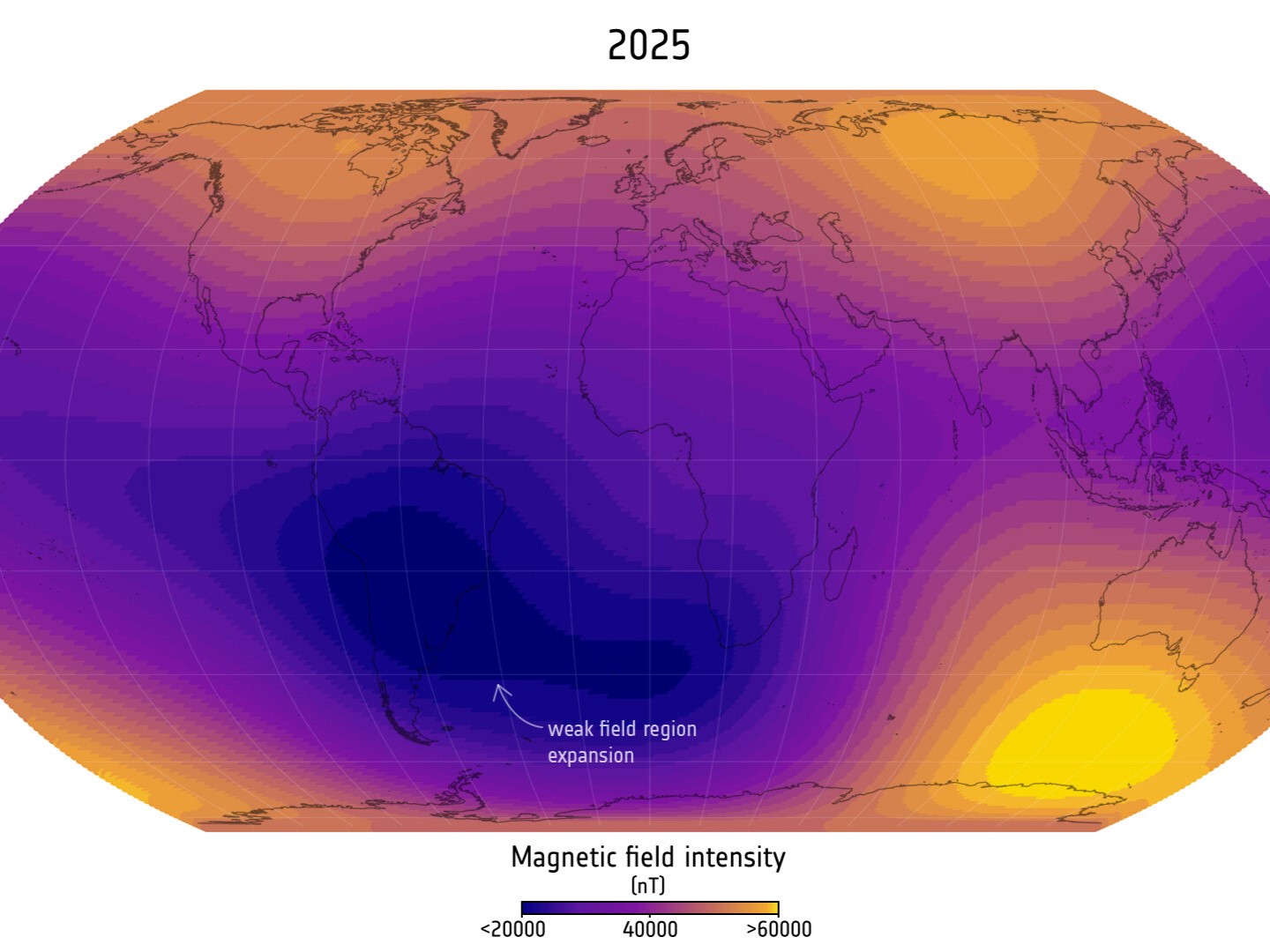The European Space Agency’s (ESA) Swarm satellite mission has identified a significant and rapid change in the Earth’s magnetic field. This anomaly, specifically located in the South Atlantic, is experiencing a growth rate of approximately 20 nanoteslas per year. The findings, published in October 2023, highlight the importance of monitoring the planet’s magnetic environment and its implications for various technologies and ecosystems.
The South Atlantic Anomaly (SAA) is a region where the magnetic field is notably weaker than in other areas. This phenomenon poses challenges for satellites and other space-based technologies, as they can be exposed to higher levels of radiation. The Swarm satellites, which were launched in 2013, play a crucial role in mapping these changes and providing valuable data to scientists.
ESA’s Swarm mission consists of three identical satellites that orbit the Earth at altitudes between 300 and 500 kilometers. These satellites are equipped with advanced instruments to measure variations in the magnetic field with remarkable precision. By analyzing the data collected over the years, researchers can better understand the dynamics of the Earth’s magnetic field and its interactions with solar winds.
Understanding the Impacts of Magnetic Field Changes
The recent findings have raised awareness about the potential consequences of the growing anomaly. The magnetic field acts as a shield, protecting the Earth from harmful solar radiation. A weakening magnetic field can increase radiation exposure for satellites, leading to potential malfunctions or shortened lifespans. Additionally, this weakening could affect navigation systems, communications, and even power grids on the surface.
According to the European Space Operations Centre, the SAA currently extends from approximately 80,000 kilometers over the South Atlantic to around 40,000 kilometers over southern Africa. As the anomaly expands, it is essential for scientists to closely monitor its progression and understand its long-term effects.
The implications of these changes are not limited to technological impacts. The Earth’s magnetic field also influences animal navigation. Many species, including birds and sea turtles, rely on the magnetic field for migration and navigation. Disruptions in this field may lead to disorientation and changes in migratory patterns.
Future Research Directions
Moving forward, ESA plans to continue its monitoring efforts through the Swarm mission. The data collected will be invaluable for improving models that predict future changes in the magnetic field. Scientists aim to unravel the complexities of the magnetic environment and its relationship with geological processes occurring within the Earth.
Overall, the discovery of this fast-growing anomaly serves as a reminder of the dynamic nature of our planet. As technology advances, understanding these changes becomes increasingly critical for safeguarding both human activities and the natural world. The ongoing work of ESA’s Swarm satellites will provide essential insights that could help mitigate potential risks associated with these magnetic shifts.
